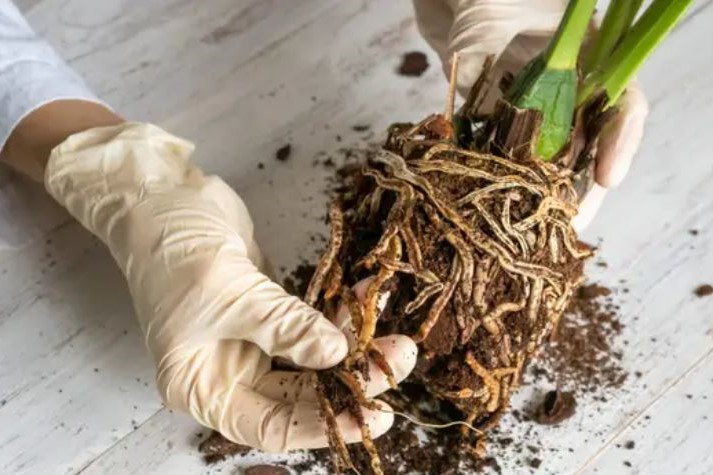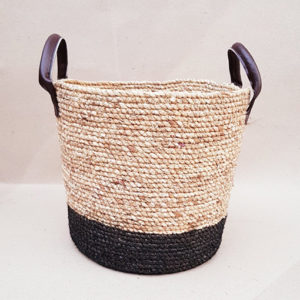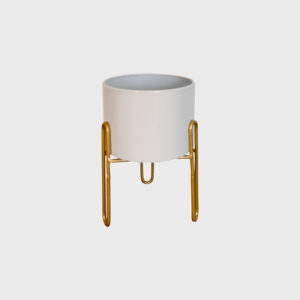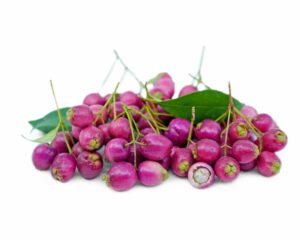
#Thejunglecollective!
Lilly Pilly, scientifically known as Syzygium and previously as Acmena smithii, is a popular choice for hedging and ornamental purposes in Australian gardens. This versatile and attractive plant, however, is not without its challenges. Proper care and maintenance can mitigate many issues, but understanding common pests and diseases is essential for ensuring your Lilly Pilly thrives. Here, we explore five prevalent problems affecting Lilly Pilly plants and offer insights into their identification, prevention, and treatment.
1. Lilly Pilly Psyllid
Identification and Symptoms
The Lilly Pilly Psyllid (Trioza eugeniae) is a sap-sucking insect that primarily targets the new growth of Lilly Pilly plants. These tiny pests cause distinctive damage known as “pimpling,” where the leaves become disfigured with bumps and irregular growth patterns. In severe infestations, the foliage may also exhibit discoloration and distortion.
Prevention and Treatment
- Resistant Varieties: Choosing psyllid-resistant Lilly Pilly varieties is the most effective prevention strategy. Varieties such as ‘Resilience’ and ‘Cascade’ are less susceptible to psyllid attacks.
- Horticultural Oils: Applying horticultural oils or insecticidal soaps can help control psyllid populations by smothering the insects.
- Regular Monitoring: Regularly inspecting your plants for early signs of psyllid activity allows for prompt treatment before the infestation becomes severe.
2. Myrtle Rust
Identification and Symptoms
Myrtle rust (Austropuccinia psidii) is a fungal disease that affects a wide range of Myrtaceae family members, including Lilly Pilly. The disease manifests as bright yellow or orange spores on the leaves, stems, and flowers. Severe infections can cause leaf distortion, defoliation, and even plant death.
Prevention and Treatment
- Resistant Varieties: Opt for resistant Lilly Pilly varieties, such as Syzygium australe ‘Aussie Southern’, to minimize the risk of myrtle rust.
- Proper Spacing and Pruning: Ensuring good air circulation through proper plant spacing and regular pruning helps reduce the humidity levels that favor fungal growth.
- Fungicides: In severe cases, applying fungicides specifically formulated for myrtle rust can help control the spread of the disease. Always follow label instructions and apply preventatively or at the first sign of infection.
3. Sooty Mould
Identification and Symptoms
Sooty mould is a fungal condition that thrives on the honeydew excreted by sap-sucking insects such as aphids, scale, and psyllids. It appears as a black, sooty layer on the leaves, stems, and branches, which can impede photosynthesis and weaken the plant.
Prevention and Treatment
- Controlling Sap-Sucking Insects: Managing the populations of aphids, scale, and psyllids is crucial in preventing sooty mould. Using horticultural oils and insecticidal soaps can effectively reduce these pests.
- Regular Cleaning: Gently washing affected leaves with a mixture of water and a small amount of dish soap can help remove the mould and improve the plant’s health.
- Promoting Beneficial Insects: Encouraging natural predators like ladybugs and parasitic wasps can help keep sap-sucking insect populations in check.
4. Scale Insects
Identification and Symptoms
Scale insects are small, sap-sucking pests that attach themselves to the stems and leaves of Lilly Pilly plants. They appear as small, round, or oval bumps that can be brown, black, or white. Infestations can lead to yellowing leaves, stunted growth, and the presence of sooty mould.
Prevention and Treatment
- Regular Monitoring: Early detection through regular plant inspections is key to managing scale insects effectively.
- Horticultural Oils: Applying horticultural oils can smother scale insects and reduce their numbers.
- Pruning: Removing heavily infested branches can help limit the spread of scale insects and improve overall plant health.
5. Root Rot
Identification and Symptoms
Root rot is caused by various soil-borne fungi, such as Phytophthora, which thrive in overly wet or poorly drained soils. Symptoms include wilting, yellowing leaves, stunted growth, and in severe cases, plant death. The roots of affected plants often appear dark and mushy.
Prevention and Treatment
- Proper Watering: Ensuring proper watering practices is essential. Lilly Pilly plants prefer well-drained soils and regular watering that allows the soil to dry out between waterings.
- Soil Health: Improving soil drainage by incorporating organic matter and avoiding waterlogged conditions helps prevent root rot.
- Fungicides: Infected plants may require treatment with fungicides specifically designed for soil-borne pathogens. Additionally, removing and destroying severely affected plants can prevent the spread of the disease to healthy plants.
Growing Conditions for Healthy Lilly Pilly
Ensuring optimal growing conditions is fundamental to preventing many of the pests and diseases that affect Lilly Pilly. Here are some tips to maintain a healthy plant:
- Soil and Watering: Lilly Pilly prefers well-drained, slightly acidic to neutral soils. Regular watering is important, but avoid waterlogging the soil to prevent root rot.
- Sunlight: These plants thrive in full sun to partial shade. Ensuring adequate sunlight can help maintain robust growth and reduce the likelihood of fungal infections.
- Pruning: Regular pruning promotes good air circulation and removes potential breeding grounds for pests. It also encourages healthy new growth and maintains the desired shape of the plant.
- Fertilization: A balanced, slow-release fertilizer applied during the growing season supports overall plant health and resilience against pests and diseases.
Lilly Pilly plants, while generally hardy and versatile, can fall victim to various pests and diseases if not properly cared for. Understanding the common issues like Lilly Pilly Psyllid, myrtle rust, sooty mould, scale insects, and root rot, along with implementing appropriate preventive and treatment measures, is crucial for maintaining the health and beauty of your plants. By choosing resistant varieties, practicing good horticultural habits, and regularly monitoring your plants, you can enjoy the lush, vibrant foliage and privacy that Lilly Pilly hedges and shrubs provide.
Incorporating these practices into your gardening routine will help ensure your Lilly Pilly plants thrive and remain a beautiful feature in your garden for years to come.
If you want more information about caring for indoor and outdoor plants, check out our shop for a wide selection of both plants and planters.























